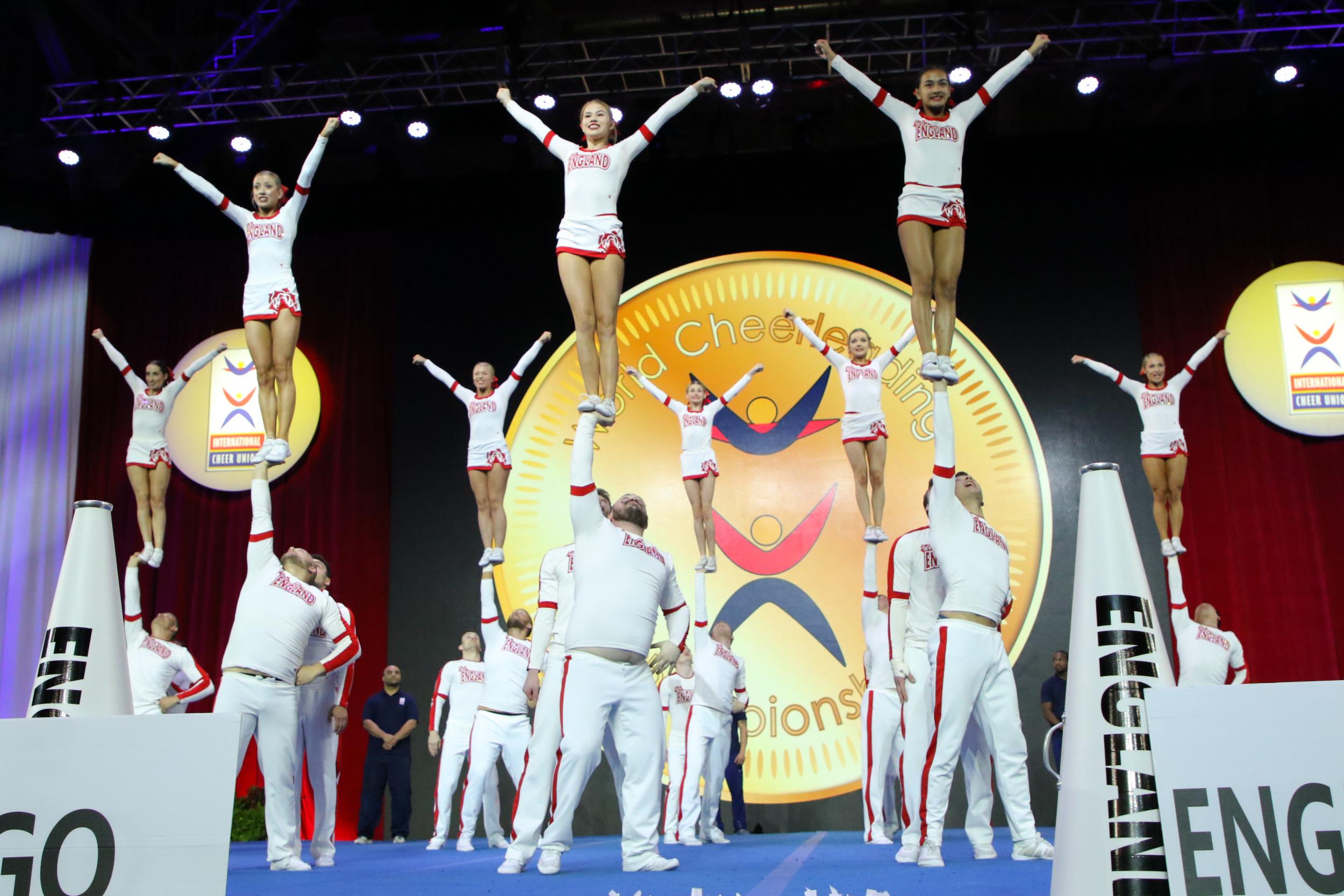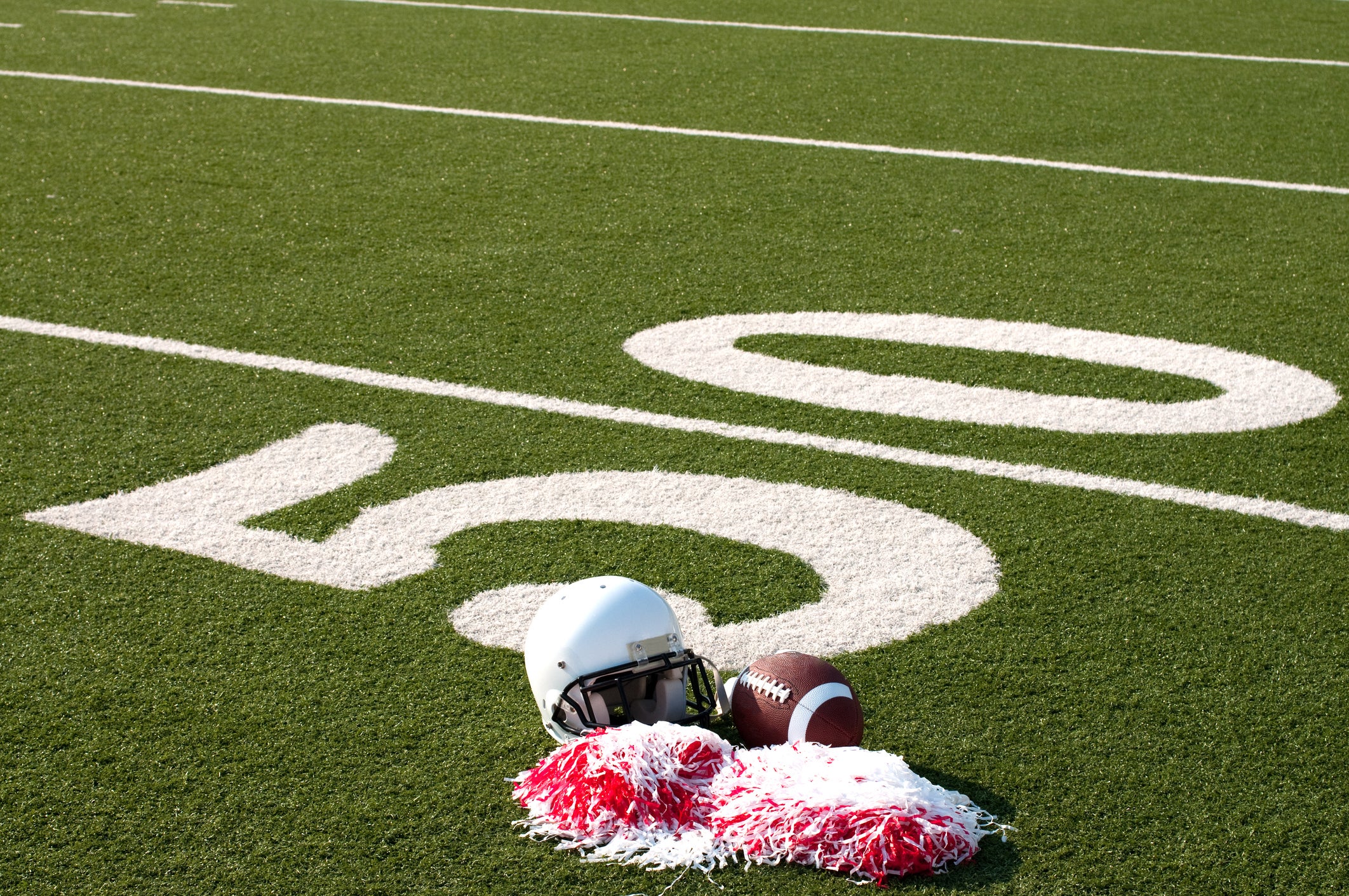14 hours training a week, 38,000 spectators, homophobic slurs: What it's really like to be a male cheerleader
Now largely considered a female domain, cheerleading was in fact a men-only sport until the 1920s. One man reveals what it's like to be a male cheerleader.


Your support helps us to tell the story
From reproductive rights to climate change to Big Tech, The Independent is on the ground when the story is developing. Whether it's investigating the financials of Elon Musk's pro-Trump PAC or producing our latest documentary, 'The A Word', which shines a light on the American women fighting for reproductive rights, we know how important it is to parse out the facts from the messaging.
At such a critical moment in US history, we need reporters on the ground. Your donation allows us to keep sending journalists to speak to both sides of the story.
The Independent is trusted by Americans across the entire political spectrum. And unlike many other quality news outlets, we choose not to lock Americans out of our reporting and analysis with paywalls. We believe quality journalism should be available to everyone, paid for by those who can afford it.
Your support makes all the difference.It’s 5pm on a Tuesday evening and Lewis Judd is making the hour-long commute home from work. This week, his job as a construction site project manager will have seen him drive across the UK, meeting with clients in Birmingham and builders on location near Aylesbury.
But work isn’t over yet. He’s en route to Surrey where, in just a few hours, he will have performed a highly skilled “basket toss”, throwing a woman 20ft in the air before catching her with one hand in a move known as the “toss cupie” - not bad for a former rugby player who admittedly once thought cheerleading “was just a load of pompoms”.
On Sunday 3 February, history will be made when two male cheerleaders for the Los Angeles Rams will cheer for the first time in the National Football League’s existence alongside their female teammates at the Super Bowl in Atlanta, Georgia. While there have been stuntmen on NFL cheer squads in the past, cheerleaders Quinton Peron and Napoleon Jinnies will be the first men to fully take part and dance the same moves with the female cheerleaders in their team at the game.
It’s estimated that 1.5 million people participate in all-star cheerleading in the US. According to statistics from the UCLA, 97 per cent of cheerleaders who take part in the sport are female, but 50 per cent of all collegiate cheerleaders are male. And, contrary to public opinion, cheerleading was an all-male sport at its inception in the mid-1800s.
In 1911, an article published in the weekly US magazine The Nation described a cheerleader as “one of the most valuable things a boy can take away from college”.
“As a title to promotion in professional or public life, it ranks hardly second to that of having been a quarterback," it added
It was a sport taken up by former U.S. Presidents Franklin Roosevelt, Dwight D. Eisenhower, Ronald Regan, and actor Jimmy Stewart during their college days at the likes of Harvard and Yale. But it wasn’t until 1923, when gymnastics was slowly introduced to the sport, that women were finally accepted to cheerleading teams, increasing in number when large numbers of men were deployed to fight in World War II.
However, women’s involvement continued to be the subject of debate. In 1938, one opponent even argued that female cheerleaders had no place in the sport, describing them as frequently becoming “too masculine for their own good”. Years later, in 1954, a group of unpaid female Baltimore Colts Cheerleaders became the first full-time team in the NFL.
Yet despite men’s overarching historical involvement or, rather, dominance in the sport, their inclusion nowadays appears to come as surprise to many, most recently reflected in the countless news articles regarding the male cheerleaders featured at this weekend’s Super Bowl.
“When I first started, I was more embarrassed about telling people I was a cheerleader,” says Judd. “People don’t expect you to say you’re a cheerleader as a guy - it shocks them. More often than not, they laugh, but I’m used to people misunderstanding the sport.”
For the unitiated, cheerleading is the performance of athletic skills, jumps, dance and/or chanting at an event, be it in support of a sports team or to score points in a cheerleading competition. Like many sports, it consists of a variety of disciplines including ‘traditional’ cheer (organised routines), stunts (pyramids and basket tosses etc), and acro and tumbling (acrobatic moves, dance and tumbling, set to music).
Judd’s involvement in cheerleading started nine years ago at university when a group of women in his halls invited his male flatmates to the cheerleading squad’s “bring a boy” session.
“My friends from school thought it was a joke,” the Team England and Unity Allstars Black professional competitor reveals. “I received derogatory responses like ‘you must be gay to be doing that’ and ‘you’re only doing it to look up girls’ skirts’.”
Even now, having won last year’s World Championships in Orlando, Florida with his Team England squad and performed at the NCA All Star Nationals in Dallas, Texas to crowd upwards of 38,000 spectators, the 28-year-old faces the same prejudice regarding his gender in the sport.
“I’ve endured more injuries from cheerleading than when I did playing rugby but, still, a lot of my colleagues don’t understand what’s involved in the sport,” he says. “I regularly turn up to work with black eyes following a night of cheerleading practice.”

It’s only when he shows his co-works videos of him throwing a woman in the air or tumbling across a stage do they understand the intensity and physicality of the sport. “I always have to have at least one video of a routine I’ve done saved on my video to show people what we actually do,” he adds.
In addition to a full-time job, the sportsman says he could be doing up to 14 hours of training and practice a week – this excludes personal strength training and the monthly two-day Team England camps in Coventry and London which rack up a gruelling 18 hours.
Judd explains: "Cheerleading is one of the most physical sports I’ve done in terms of what it demands from you. In rugby, I could miss a couple of sessions and it wouldn’t matter. But if you miss a cheerleading session, your entire team of 24 members won’t be able to train. The whole team must learn how to perform, lift, jump, tumble and dance at exactly the same time. You can’t afford to let you teammates down.”
Ahead of the Super Bowl this weekend, Judd imagines the male cheerleaders performing will be feeling the pressure.
“It’s one of the biggest crowds they’ll have ever performed in front of and it’s their opportunity to show off what male cheerleaders can do,” he says. “I hope their involvement this weekend helps to expose the sport a bit more and educate people about the reality of cheerleading, which is far removed from the misconceptions surrounding it."
Join our commenting forum
Join thought-provoking conversations, follow other Independent readers and see their replies
Comments